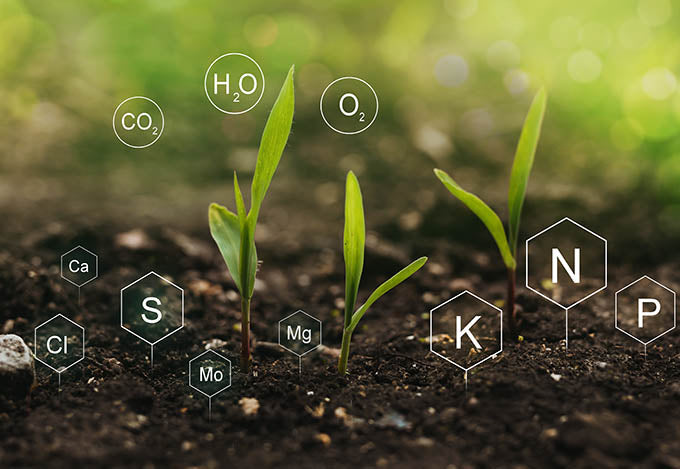
You're Fertilizing All Wrong
Hint: It takes more than eggshells and coffee grounds to grow your garden.
If you’re a social media-savvy gardener, you may have noticed a plethora of TikToks, Reels, and Stories in your feeds recently about creating your own plant food. These short videos generally run something like this: An exuberant gardener places a banana peel in a mason jar with water, caps it, lets it sit for a week, then gives it a shake—“voila, fertilizer!” If it’s not banana peels, it’s eggshells or tea bags. Or it might be compost soaking in a bucket. If you’re relying on these methods as the sole source of nutrition for your garden, then you’re feeding your plants Doritos instead of kale.

While peels, shells, and vegetable scraps do break down and release nutrients into water or soil, exactly what and how much your DIY plant food contains is hard to know. And, it takes years for items like eggshells to break down into soil nutrients. If this homebrewed concoction is all that’s added to your crops, those plants could end up with nutrient deficiencies.
Know Where You’re Starting With a Soil Test
Like any journey, leading your crops to a successful harvest begins by knowing where to start. This goes for both the soil type and the nutrients it contains. You can determine both by performing a soil test.
Professional soil tests provide a wealth of information about your garden’s soil, including but not limited to the type of soil (loam, sand, silt, or clay), its acidity, and the levels of certain elements it contains such as Phosphorus, Calcium and Magnesium. Soil tests don’t typically check for nitrogen levels because nitrogen is constantly cycled through the soil by biomass removal; i.e., it’s taken up by the plants, and then the plants are removed through harvesting or weeding.
Soil tests reveal what nutrients your garden needs and often suggestions for how to adjust. A deficiency in calcium, for example, could impact the functioning of the plants’ cell walls. Knowing how much you’re deficient in calcium, for example, allows you to calculate exactly how much lime to add to your soil to reach sufficient levels. That’s not necessarily possible if you’re adding only eggshells as a remedy.
Some soil tests also report on the level of certain metals such as aluminum and lead. This is especially important for households with children where high levels of metals can be detrimental to a child’s health. You’d be surprised at the materials left behind in a property’s soil after construction, so it’s always a good idea to determine if your soil is safe for edible gardening activities before you plant.

Knowing Your Numbers
Now that you know your soil’s starting point, providing known quantities of nutrients via fertilizers is the best way to provide—or in some cases, limit—additional amounts. A packaged fertilizer states the amount of “the big three” nutrients—Nitrogen, Phosphate (Phosphorus) and Potash (Potassium)—contained within as percentages. For example, a fertilizer may prominently display the numbers “10-5-10,” which indicates the fertilizer has 10% Nitrogen, 5% Phosphate, and 10% Potash. To calculate this in pounds, multiply the weight of the fertilizer package by the percentage. Using a 5-pound bag of this 10-10-10 fertilizer, multiply 5 by 0.10 to determine that the bag contains 0.5 pounds of Nitrogen, 0.25 pounds of Phosphate, and 0.5 pounds of Potash. As another instance, a bone meal formulation’s ratios are typically 3-15-0, or low in Nitrogen and Potash but high in Phosphate, which is critical for photosynthesis and flowering.
The bone meal illustrates a point about using just one type of fertilizer. In this case, bone meal contains no Potash. Potash is crucial for a plant’s ability to absorb water and synthesize sugars. Relying on bone meal alone would be detrimental to your garden. This goes for any formulation with low or nil numbers in one of “the big three,” as well as for DIY concoctions made from one or two ingredients.

Grow Based On Your Soil
Did you get all that? Clear as mud, right? That’s why so many new and even experienced gardeners fall behind their garden’s nutrition needs.
But don’t you worry—get a soil test from your local extension office, follow their recommendations using organic fertilizers, and you and your garden will be happy.
